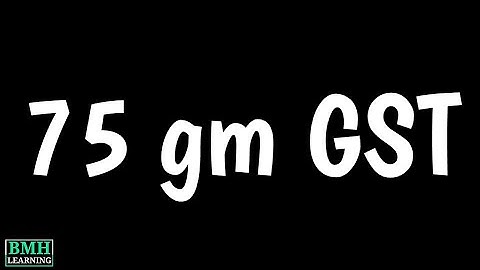 Show
Have you been asked countless times by patients why dental clinicians need to take blood pressure prior to the appointment? Are you working in an office that has yet to establish a patient triage prior to appointments? Understanding the important role that the dental clinician plays in risk assessment protocol can mean life or death to patients. Blood pressure is “the amount of pressure of circulating blood against the walls of blood vessels.”1 Blood pressure consists of systolic pressure and diastolic pressure. The systolic pressure is the maximum pressure during one heartbeat, and diastolic pressure is the minimum pressure during two heartbeats. Systolic pressure is the action or pumping of the blood in comparison to the diastolic pressure that is when the heart muscle relaxes and refills with blood. The diastolic pressure is also known as the “resting pressure.”1 The three categories of blood pressure are hypertension or high blood pressure, hypotension or low blood pressure, and normotension or normal pressure. Hypertension is “the most chronic cardiovascular condition in the United States.”2 According to the Centers for Disease Control and Prevention (CDC), “nearly half the adult U.S. population has hypertension.”3 However, only one in four adults who are diagnosed with hypertension have the disease controlled by diet or medication.3 Therefore, dental management precautions in patients with hypertension and hypotension are important in the dental setting on many levels. Blood pressure reading can influence clinician decisions about dental treatment in specific ways. Blood Pressure CategoriesThe American Heart Association (AHA) provides a chart to determine the blood pressure categories based on the assessed readings. According to the chart, the normal range of blood pressure is a systolic pressure of 120mm Hg or less, and the diastolic pressure is less than 80mm Hg. An elevated blood pressure will range from 120-129mm Hg systolic and less than 80mm Hg diastolic. However, hypertension is subdivided into three stages. Stage 1 hypertension indicates a systolic reading of 130-139mm Hg or a diastolic reading of 90mm Hg or higher. Stage 2 hypertension indicates a systolic reading of 140mm Hg or higher or a diastolic reading of 90mm Hg or higher. Lastly, a hypertensive crisis is a systolic reading higher than 180mm Hg and/or a diastolic reading of higher than 120 mm Hg.4 Risk Factors of High Blood PressureMedical history assessment of a patient is imperative in determining the risk of high blood pressure. Uncontrolled risk factors include genetics, age, sex, and race/ethnicity. In 2017, the CDC implemented the new high blood pressure guidelines that indicate 54% of black males have hypertension as opposed to the 46% of white adults, 39% of Asians, and 36% of Hispanics.3 Furthermore, the risk of hypertension is elevated at the age of 65 or older based on Harvard Health Publishing, which indicates 70-79% of males age 55 or older are classified as having hypertension.5 The rise in hypertension with age is due to the increased stiffness of arteries due to long-term plaque buildup, increasing the risk of cardiovascular disease. However, controlled risk factors may play a role in hypertension, and examples include an unhealthy diet, lack of physical activity, high alcohol consumption, smoking, obesity, and diabetes. Favorable health choices to reduce the risk of hypertension are foods low in cholesterol and saturated fats, daily exercise, minimal alcohol consumption, and a tobacco-free lifestyle.3 How do the controlled risk factors affect blood pressure?
Dental Treatment ConsiderationsThe dental considerations of the dental patient to prevent a decrease in blood pressure involve patient position. Orthostatic hypotension is “when there is a drop in blood pressure when standing or laying for long periods of time.”2 The risk factors involved in orthostatic hypotension are age, diabetes, and autonomic dysfunction. During the dental visit, the patient being positioned supine for long lengths of time may increase the risk of orthostatic hypotension. Typically, light-headedness or dizziness are telltale signs. To prevent orthostatic hypotension, a gradual incline is recommended.2 In the case of the dental patient feeling light-headed or dizzy, having the patient sit for a period will help regulate blood pressure.2 On the other hand, the treatment considerations for a dental patient with high blood pressure are a bit more complex due to the use of local anesthetics. The local anesthetics used in dental treatment contain epinephrine, which is a vasoconstrictor. The use of epinephrine increases the quality of anesthesia while decreasing the quantity needed during treatment. When a vasoconstrictor, such as epinephrine is added to the anesthetic to contradict a patient’s vasodilation quality, the blood vessels are constricted, thus reducing blood flow to the injection site.6 Some precautions should be taken to reduce the risk of any adverse reactions for a patient with high blood pressure when using local anesthetics containing epinephrine. First, limiting the epinephrine dose will prevent the risk of negative effects. Second, using a slow injection technique and aspirating carefully will reduce the possibility of harmful results. Last, avoiding the use of a gingival retraction cord, which may cause a higher concentration of epinephrine at the site, is recommended.2 How to Proceed with Dental TreatmentA pre-operative blood pressure reading should be taken and logged in the dental treatment notes. The pre-operative blood pressure reading will determine how to proceed with dental care and outpatient dental care recommendations. A blood pressure reading of <160/100 mm Hg would indicate no modifications in elective or emergent dental care. However, a blood pressure reading of >160/100 mm Hg would indicate the blood pressure measurement should be retaken and the following steps enacted for elective care:
If the patient is seeking emergency dental care, then the protocol is as follows:
Factors to Achieve Accurate Blood Pressure ReadingsAchieving an accurate blood pressure reading is important for the dental patient and dental clinician. Implementing an accurate blood pressure setting will decrease stress to the patient and increase time management for the dental clinician. As recommended by the American Academy of Family Physicians (AAFP), many key elements may play a role in reducing a higher-than-normal reading.7 First, the patient should avoid caffeine, exercise, and smoking 30 minutes before the dental visit, all of which will help in preventing a higher-than-average reading. Secondly, patients should relieve their bladder prior to being seated and refrain from talking or laughing while blood pressure reading is being taken. Also, patient position is important. The patient should be relaxed with both feet on the floor. Most importantly, the placement of the blood pressure cuff is critical. Removing clothing that may obstruct the cuff placement and the proper position of the cuff while supporting the patient’s arm in an elevated position are imperative to an accurate blood pressure reading. Proper cuff position includes placing the arm cuff where the middle of the cuff is level with the right atrium and midpoint to the sternum. Arm Cuff vs. Wrist CuffAlthough a wrist and arm blood pressure monitor both have the same goal in mind, the American Heart Association (AHA) recommends an arm cuff for home monitoring.8 The reason for the AHA recommendation is that the wrist cuff may be less accurate than an arm cuff device. Typically, wrist cuffs read higher as a result of improper technique. While using the wrist cuff, it is important to understand that the veins in the wrist are narrower than the upper arm and closer to the skin, and, therefore, the arm and wrist must be at heart level to achieve accurate readings. Although the arm cuff is recommended, an inaccurate blood pressure reading may result with an arm cuff if the proper technique is not implemented or the cuff is ill-fitted.8 The role that dental clinicians play in the patients’ health assessment is important to maintaining patients’ confidence as well as their safety. Hence, pre-operative blood pressure is key in achieving these goals. The age-old question presented by patients is, “Why do I need my blood pressure taken for a dental appointment?” The accurate answer and imperative objective are to understand the effects of blood pressure and dental contraindications. Need CE? Check Out the Self-Study CE Courses from Today’s RDH!Listen to the Today’s RDH Dental Hygiene Podcast Below:References
Can you get a tooth pulled with high blood pressure?Dental Blood Pressure Guidelines. Regardless of the procedure, a dentist will not perform a procedure or dental work on an individual with systolic or diastolic blood pressure higher than 180 or 109. This is because the risks associated with any dental procedure are far higher when individuals have high blood pressure.
Can you use a local anesthetic in a client with hypertension?Local anesthetic solutions with vasoconstrictors are not contraindicated in hypertensive patients, but due to their hemodynamic effects, local anesthetics without vasoconstrictors are mainly preferred by the clinicians.
When should you postpone dental treatment?When you brush and floss regularly, you might not think you need to have cleanings done as often. You might also put off seeing a dentist when you have slight tooth pain or other minor tooth or gum problems. Some delay professional dental care due to their work schedule or similar problems.
Does the dentist have to take your blood pressure?Local anesthetics contain epinephrine
If a dentist doesn't check your blood pressure and uses a local anesthetic, an individual may be put at risk for a medical emergency. Often, patients have no symptoms of high blood pressure and are unaware.
What is a dangerously high blood pressure?Your blood pressure is considered high (stage 1) if it reads 130/80. Stage 2 high blood pressure is 140/90 or higher. If you get a blood pressure reading of 180/110 or higher more than once, seek medical treatment right away. A reading this high is considered “hypertensive crisis.”
Why do dentists ask about high blood pressure?Your dentist can learn a lot by taking your blood pressure during your cleaning and checkup. It allows them to create a baseline to monitor it for any issues. Hypertension can indicate your anxiety levels are on the rise, so your dentist can adjust their treatment plan to meet your comfort needs.
|

Related Posts
Advertising
LATEST NEWS
Advertising
Populer
Advertising
About

Copyright © 2024 chuyencu Inc.


















